Antelope Island, Utah
August 8, 2005
Continuing our exploration of Antelope Island, we drove along the lakeside highway down the east side of the island.
We drove 11 miles down the east side of the island to the Fielding Garr Ranch, which is now a state park. The adventurous settler Fielding Garr started an adobe farmhouse here in 1848, which is the oldest continuously inhabited Anglo-built house in Utah. |  |
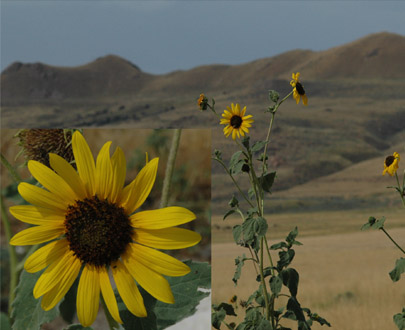 | The ranch was surrounded by sunflowers and grassy hills. Not expecting much, I was quite impressed with the operation of the ranch by volunteers who had set it up as a farm educational experience for school groups. We watched a couple of groups from apparently non-traditional schools move around the farm. 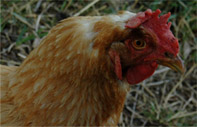 |
 | 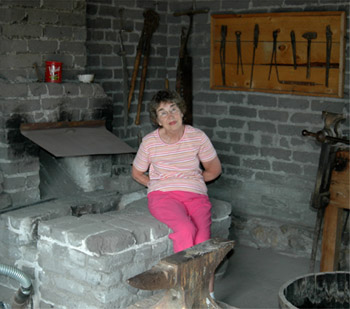 |
Rod enjoyed the old shop tools like this drill press. Brenda poses in the blacksmith shop which didn't look to be that long out of service.
 | When we walked into the shop museum, this deer walked right in with us. She was so friendly and so familiar with the place, she might as well have been the tour guide. 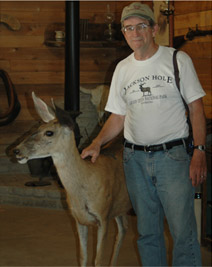 |


This place was particularly nostalgic for Rod since he had used nearly all these tools at some time during his youth, and they sold milk and cream in dairy cans like these.
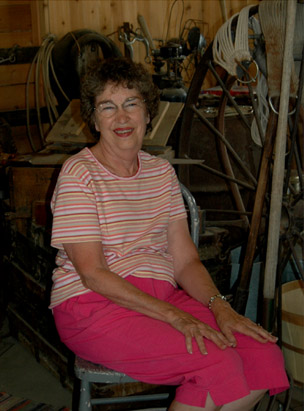 | 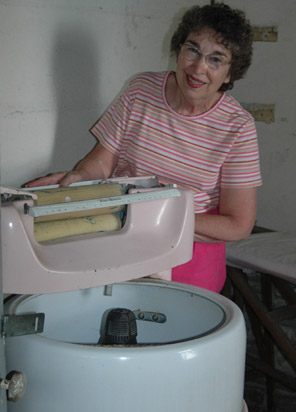 |
Brenda had her moments of nostalgia as well with the wringer washing machine above right and the pot-bellied stove. Rod's house had one of these stoves in the living room when he was growing up on the farm in Arkansas. They had kept the farm simple and authentic. Impressive!  | 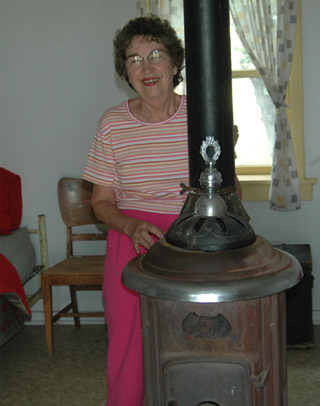 |
 | We ended our visit on the Fielding Garr farm with a look at the horses out back and a view across the Great Salt Lake to the Wasatch Mountains. Sometimes you are surprised by joy, and this had been an unexpectedly pleasant visit. |
We drove back up the east shore road with a view over toward the Wasatch Mountains on the shore of the Great Salt Lake. | 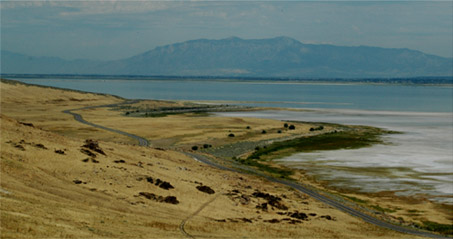 |
 | We took the road westward across the island toward Buffalo Point and got this view of the western side of the island, looking almost southward. You can see the salt deposits on the beach. |
From Buffalo Point we could look back over the road, and we followed that road back to turn off to the beach so that we could see the Great Salt Lake close up. The landscape was mostly dry grass and sagebrush. We wondered what it would look like in the spring. |  |
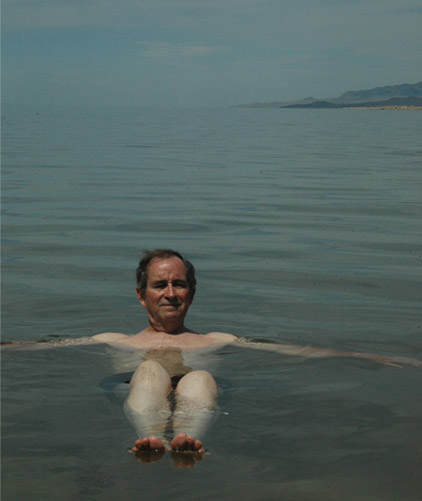 | It's true! You float like a cork in the Great Salt Lake!We parked at the visitor center at the beach and walked a long way to the water. It was good that we had sandals because the encrusted crystallized salt was hard on your bare feet. We walked out a hundred yards in the water, and we were still knee deep! It seemed like we had to walk a quarter mile to get deep enough to really float - but then you really did feel the difference. You could just lay back in the water. |
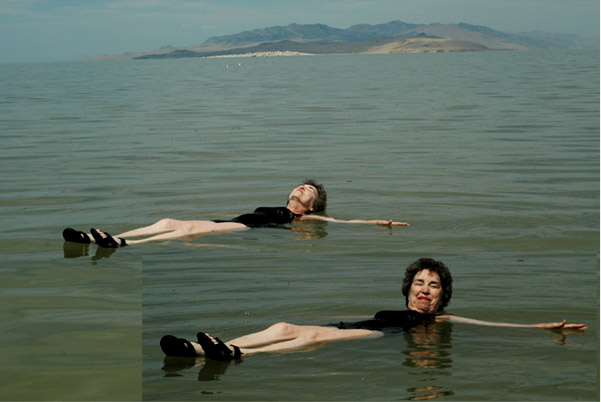
Brenda floats like and otter with a background of the distant misty mountains.
|
You could actually raise your head a good bit and still float!  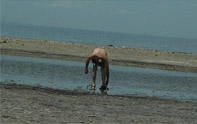 | 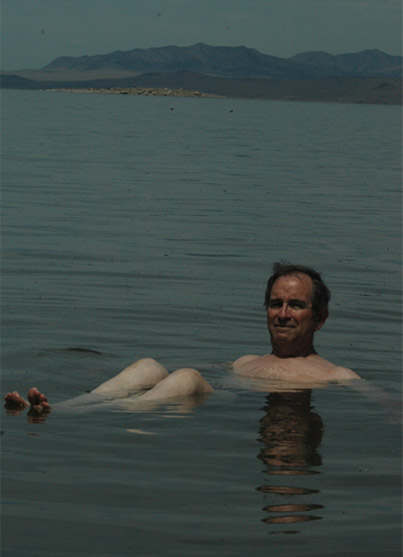 |
We headed back toward Salt Lake City after a very satisfying excursion to Antelope Island. We felt very blessed by what we had seen and experienced in this wide open and peaceful place.
| The approach of Katrina |
2005